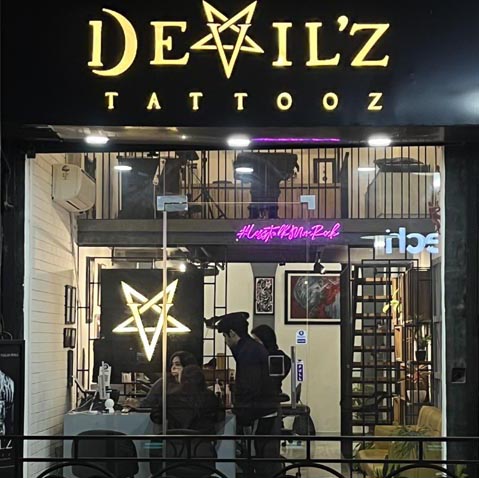From Frames to Feeling How Stylized VFX Redefines Storytelling

In the world of visual effects, realism often gets the spotlight. From hyper-detailed explosions to lifelike creatures, creating realistic visuals has been the industry benchmark for decades. But behind the scenes, many artists argue that stylized VFX is where the real challenge lies. Why? Because crafting the unreal in a believable and emotionally resonant way is a delicate dance—a mix of chaos and control that pushes creative and technical limits far more than replicating real-world physics.
Realism vs. Stylization: The Core Differences
Realism in VFX is grounded in rules. Whether it's gravity, physics, or anatomy, there are established systems to guide the process. Stylized VFX, on the other hand, breaks those rules—intentionally. The goal isn't to mimic the real world, but to evoke mood, emotion, and tone. That freedom might seem like a creative playground, but it comes with far more ambiguity and far fewer reference points.
Think of Spider-Man: Into the Spider-Verse or Arcane—both are masterpieces of stylized visual storytelling. Their success didn’t come from copying reality, but from building entirely new visual languages. Each frame is designed with purpose: the lighting, the movement, the color schemes—all choreographed to serve a narrative that feels real, even when nothing in the frame looks like our world.
Why Stylization Demands More Skill
Stylized VFX demand a mastery of fundamentals and an ability to abstract them creatively. You can’t just scan a 3D object or rely on motion capture for movement. Everything needs to be handcrafted, considered, and tuned to the tone of the project. Here’s what makes stylized VFX so demanding:
- Intentional Imperfection: Realistic VFX tries to hide the artist's hand. Stylized VFX shows it proudly—but that means every brushstroke, glitch, or warp must be meaningful. One misstep, and the illusion breaks.
- Design-Driven Physics: When animating magic, dreamscapes, or surreal environments, artists can't rely on real-world laws. They have to invent systems that feel consistent and logical, even if they defy physics.
- Emotional Authenticity: Stylization strips away the crutch of photorealism. To resonate emotionally, it must rely on shape, movement, timing, and design. The wrong color palette or rhythm can shift the entire tone.
Controlled Chaos: The Balance Behind the Magic
In stylized VFX, chaos isn’t random—it’s curated. That’s why it's often described as “controlled chaos.” There’s an art to making something appear explosive and spontaneous while maintaining control over every frame.
Let’s take Love, Death & Robots as a case in point. Each episode showcases a wildly different aesthetic, from hyper-realism to comic-book flair. In the more stylized episodes, such as The Witness, motion blur is exaggerated, and camera movement is disorienting. Yet everything is meticulously calculated. The chaos you see is intentional—it guides your eye, builds tension, and drives the story.
The process behind these effects involves layers of animation, simulation, custom shaders, and hand-drawn elements. Each scene is passed through multiple departments—modeling, lighting, compositing—with an added emphasis on communication and collaboration. You can’t automate emotion. And in stylized VFX, you can’t fake the feeling.
The Role of Technology—and Its Limitations
Ironically, the rise of advanced VFX tools hasn’t necessarily made stylized VFX easier. While AI-assisted rotoscoping, real-time rendering engines like Unreal Engine, and procedural effects with Houdini have made certain tasks faster, they still require immense human input to look “just right” in stylized settings.
Stylized VFX often demand more manual tweaking and experimentation. You’re not just applying a physics simulation; you’re bending it to match the aesthetic. That means more time in previsualization, more iterations in post, and often longer production timelines.
Why the Demand for Stylized VFX Is Rising
Audiences are craving visual variety. After decades of photorealistic dominance, studios are leaning into styles that break the mold. From Disney’s Paperman to Netflix’s Klaus, stylized visuals have shown they can stand out in crowded content landscapes.
Recent trends point to a surge in hybrid aesthetics—combining 2D and 3D, hand-drawn textures over CGI, and painterly styles that look more like concept art than finished frames. According to a 2024 Animation World Network report, studios are allocating more budget to experimental looks because these styles engage viewers longer and create stronger emotional memory.
This stylistic exploration is also translating into a higher demand for versatile artists. Professionals who can blend traditional techniques with modern software are in greater demand than ever before. As a result, students pursuing a 3D Animation course in Bengaluru are being trained not just in technology, but in visual literacy—learning how to shape chaos into emotion, abstraction into clarity.
Latest Industry Buzz: Stylized VFX Taking Center Stage
This year’s SXSW Film & TV Festival featured MechaSoul, an indie film using an anime-inspired, glitch-heavy visual style. The project, animated entirely in Blender with custom shaders, was praised for blending cyberpunk motifs with emotionally grounded characters. The director emphasized how the biggest challenge was not technical rendering—but creating a visual vocabulary that kept viewers emotionally grounded while everything on screen screamed "surreal."
Meanwhile, Sony Pictures Animation has announced a new title exploring Afro-futuristic themes with bold color palettes and stylized particle effects, making it one of the most anticipated releases of 2025. These projects prove that stylization is not niche—it’s becoming a defining feature of mainstream storytelling.
The Artistic Responsibility in Stylized Effects
There’s another layer to why stylized VFX is harder: responsibility. With realism, the goal is accuracy. With stylization, the goal is interpretation. Artists aren’t just translating reality; they’re interpreting emotion, cultural references, and human behavior into something new and meaningful.
This creative responsibility means understanding narrative deeply, having cultural awareness, and ensuring that the choices you make resonate with diverse audiences. Stylized VFX doesn’t hide behind realism; it puts an artist’s voice front and center.
Conclusion
The next generation of visual storytellers must master more than just software. They need to understand rhythm, emotion, and the nuanced art of making chaos feel like a story. As the global VFX landscape evolves, stylized visuals are no longer just an experimental niche—they’re a powerful, lasting trend that’s reshaping how we experience narrative media.
Cities like Bengaluru are increasingly becoming key players in this evolution. With a rise in creative studios and specialized education, the city is fostering talent capable of bringing stylized VFX to life. Programs like the VFX course Bengaluru are equipping artists with the hybrid skills needed to navigate both tradition and technology—and thrive in the beautifully chaotic world of stylized animation.

Top Wedding Videographer In Dubai You Must Know
- Your wedding day is one of the most important and unforgettable moments of your life

Urgent Appendicitis Emergency Care in Houston Heights
- Get fast expert appendicitis emergency care in Houston Heights at Top Care ER Walk in 247 for accurate diagnosis pain relief and immediate treatment

Trusted Medical Billing Services in New Hampshire
- Enhance your practices revenue with expert medical billing services in New Hampshire CapitalMed Solutions ensures accuracy compliance and efficiency

Best Tattoo Studios in Gurgaon Top Places for Ink Lovers
- Gurgaon a hub of modern culture and artistic expression has become a hotspot for tattoo enthusiasts